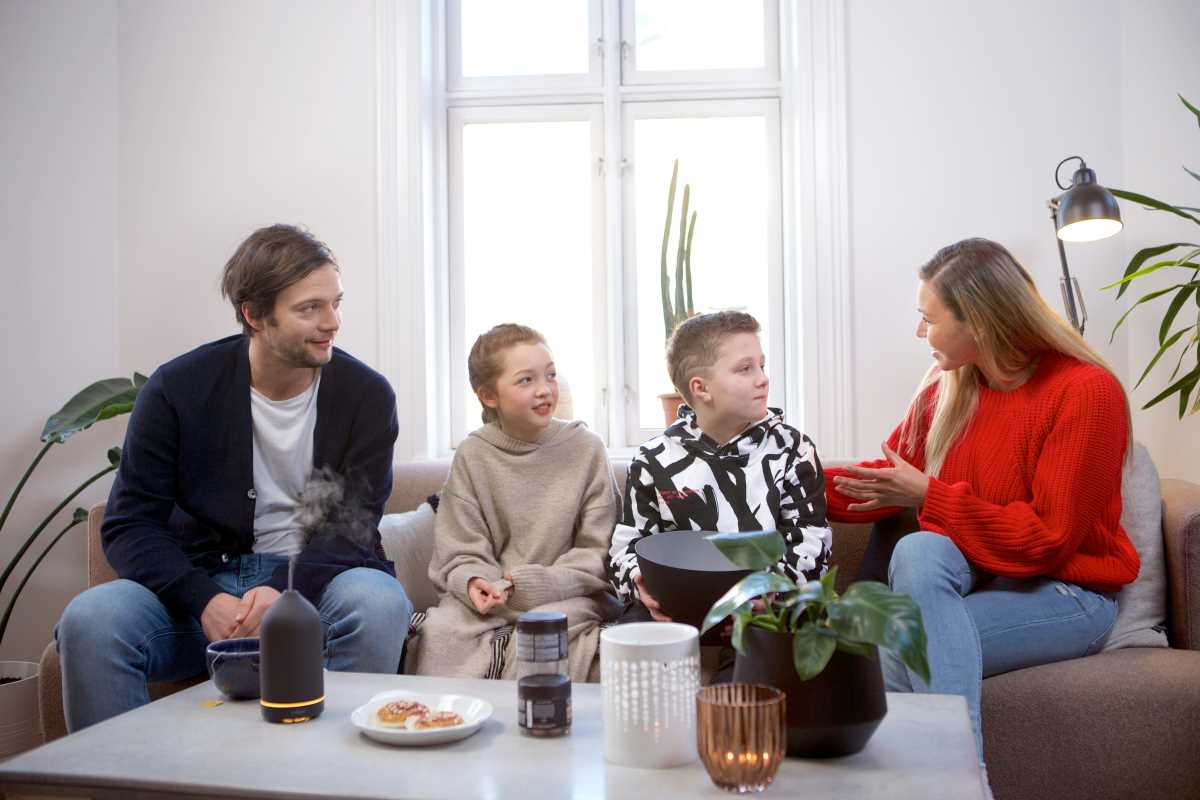In the hustle and bustle of family life, our homes are filled with sound. There’s the chatter about school, the negotiations over screen time, the recounting of a tough day at work, and the endless chorus of "Mom, where's my...?" We talk, we hear, and we respond. But in this constant flow of communication, how often do we truly listen? There’s a profound difference between simply hearing words and actively listening to the meaning and emotion behind them. Too often, we listen with the intent to reply, to fix, or to judge, rather than to simply understand.
This is where the art of active listening comes in. It's a conscious, focused effort to hear not only the words another person is saying but, more importantly, the complete message being communicated. For families, practicing active listening is a transformative skill. It has the power to diffuse arguments, deepen empathy, and build unbreakable bonds of trust and respect. It’s about creating a home where every member, from the youngest child to the oldest adult, feels seen, heard, and valued.
Understanding the Difference Between Hearing and Listening
Hearing is a passive, physical process. It’s the physiological act of sound waves hitting your eardrums and being processed by your brain. You can hear the television in the background while you scroll through your phone, or hear your child talking while you mentally plan your grocery list. Active listening, on the other hand, is a skill. It’s an active, voluntary choice to focus your full attention on the speaker, absorb their message, and comprehend its meaning without distraction or judgment.
The difference is intention. When we just hear, we are a passive receptacle for sound. When we actively listen, we are an engaged partner in the conversation. This shift from passive hearing to active listening is the foundation of meaningful communication. It sends a powerful, unspoken message to the speaker: "You matter. What you have to say is important to me, and I am here with you." This validation is one of the most fundamental human needs and is especially critical within the family unit.
The Core Components of Active Listening
Active listening isn't just about staying silent while someone else talks; it involves a set of specific techniques that show you are engaged. The first component is paying full attention. This means putting down your phone, turning away from the computer, and making eye contact. It’s about minimizing both external distractions (like the TV) and internal distractions (like your own wandering thoughts). This physical act of showing up demonstrates respect and signals that you are ready to receive their message.
The next components involve providing feedback that you are engaged. This includes non-verbal cues like nodding, smiling, and using open body language. It also involves verbal affirmations, like saying "uh-huh," "I see," or "go on." A more advanced technique is reflecting or paraphrasing what the speaker has said, for example, "So, what I hear you saying is that you felt left out when your friends made plans without you." This not only confirms that you understood correctly but also validates their feelings and encourages them to share more.
Why Active Listening Is a Game-Changer for Families
When active listening becomes the default mode of communication in a family, the entire emotional climate of the home changes. For children, feeling truly heard by a parent builds a profound sense of security and self-worth. When a child knows they can come to you with their problems, big or small, without being immediately judged or interrupted, you are building a foundation of trust that will be crucial during the turbulent adolescent years. It teaches them that their feelings are valid, which helps them develop healthy emotional intelligence.
This practice also dramatically reduces conflict. Many family arguments escalate not because of the initial problem, but because one or both parties feel unheard and disrespected. When you listen to understand your partner's or child's perspective, even if you don't agree with it, you are de-escalating the situation. Empathy naturally flows from understanding. When a family member feels understood, their defenses lower, and they become more open to finding a collaborative solution rather than digging in their heels to "win" the argument.
- Put Distractions Away: When someone is talking to you, put down your phone, turn off the TV, and give them your full attention.
- Use Open Body Language: Face the speaker, make eye contact, and nod to show you are engaged.
- Listen Without Interrupting: Let them finish their complete thought before you formulate your response.
- Paraphrase and Reflect: Repeat back what you heard in your own words. For example, "It sounds like you're feeling really frustrated about..."
- Ask Open-Ended Questions: Encourage them to share more by asking questions that can't be answered with a simple "yes" or "no."
- Validate Their Feelings: Acknowledge their emotions without judgment by saying things like, "I can see why that would make you feel sad."
How to Practice Active Listening as a Family
Like any skill, active listening requires practice. One of the best ways to start is to model the behavior yourself. When your child comes to you with a story about their day, get down on their level, make eye contact, and give them your undivided attention. When your partner is venting about work, resist the urge to offer solutions and instead just listen and validate their frustration. Your actions will speak louder than any lecture on the importance of listening.
You can also create fun, structured activities to practice together. During dinner, you could go around the table and have each person share a "high" and a "low" from their day, with the rule that no one can interrupt the speaker, and the person next to them has to summarize what they said before sharing their own. Another simple game is "Story Chain," where one person starts a story with one sentence, and the next person has to accurately repeat it before adding their own sentence. These simple games build listening muscles in a lighthearted, low-pressure way.
Overcoming Common Barriers to Active Listening
Even with the best intentions, several common barriers can get in the way of active listening. One of the biggest is the "fix-it" impulse. When we hear someone we love express a problem, our instinct is often to jump in with advice and solutions. While well-intentioned, this can inadvertently invalidate their feelings and shut down the conversation. Often, people just want to be heard and understood, not fixed. A good rule of thumb is to always ask, "Are you looking for advice, or do you just need me to listen?"
Another major barrier is formulating your response while the other person is still talking. This is incredibly common; we’re so busy planning our brilliant rebuttal or perfect piece of advice that we miss the last half of what they said. To combat this, make a conscious effort to quiet your own mind and focus solely on their words. Remind yourself that your only job in that moment is to understand. The world won't end if you take a moment of silence after they finish speaking to gather your thoughts before you respond. This small pause can make all the difference.
 (Image via
(Image via





